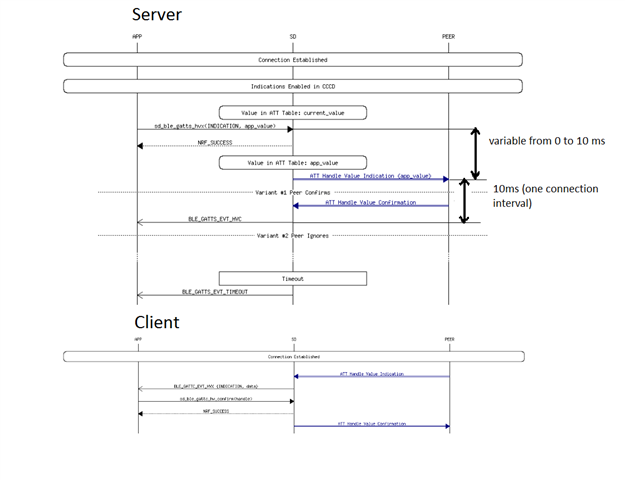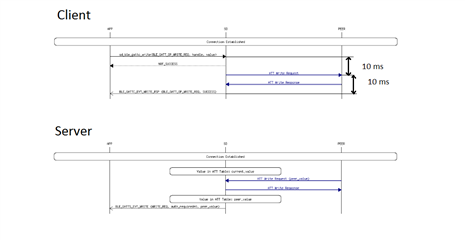Hello :)
I have a question about the timing of sending a bluetooth write request.
I am using two nrf52 developement kits, one as master and one as slave.
From my master device I send a write request using sd_ble_gattc_write.
On my slave device this triggers a BLE_GATTS_EVT_WRITE.
Then on my master device I get a BLE_GATTC_EVT_WRITE_RSP.
My connection interval is 10ms. This all works fine.
My question is: why does it take longer than one connection event to trigger the BLE_GATTS_EVT_WRITE on my slave device?
I thought it would take less than one connection interval.
I did it the other way around, from Slave to Master using Indications.
Here the time from sending the packet from my slave device until receiving the packet on my master device was less than one connection interval, like I expected.
Why is it different the other way around?
Sorry for my bad English, I hope you can awnser my question.




